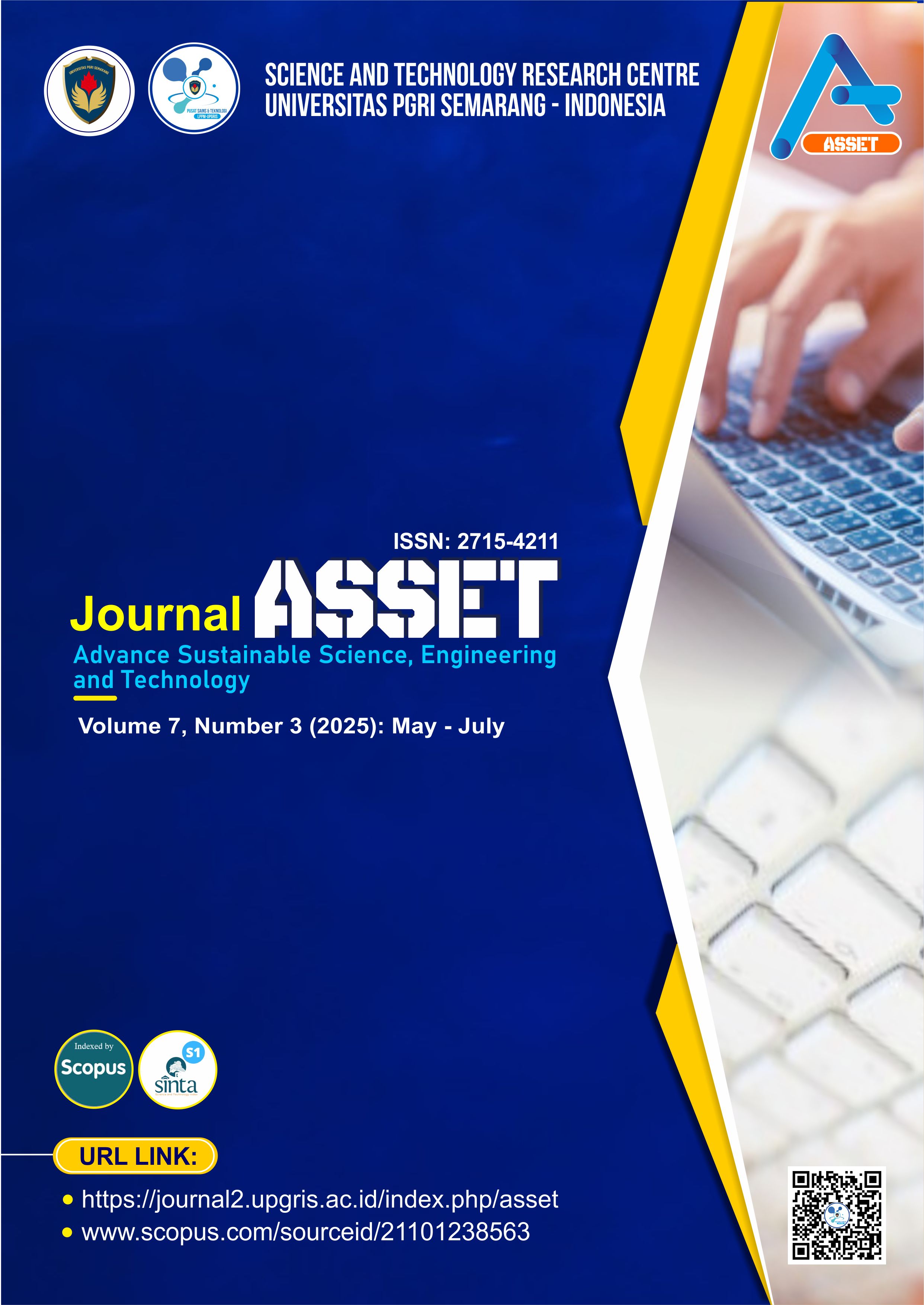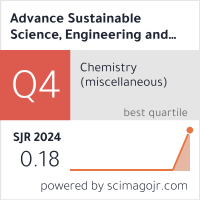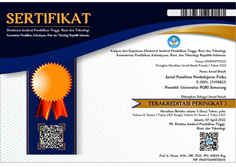Enhancing Energy Efficiency in Industrial Warehouses Using Life Cycle Cost Analysis (LCCA)
DOI:
https://doi.org/10.26877/6pd8qm77Keywords:
Life Cycle Cost Analysis (LCCA), Industrial Energy Optimization, Sustainable Lighting, LED Retrofit, Industrial Lighting, LED OptimizationAbstract
Industrial warehouses use inefficient lighting systems that occupy a significant portion of energy consumption and operating expenses. The aim of this study is to attain higher energy efficiency and reduce the lighting cost by replacing conventional high-pressure mercury vapor (HPL-N) lamps with LEDs in a warehouse environment. The study employs the Life Cycle Cost Analysis (LCCA) methodology to evaluate long-term cost-effectiveness and save energy. Data were collected using literature review, field surveys, and light simulation using Dialux software at PT XYZ warehouse in Cilegon, Indonesia, between January and June 2024. Findings reveal that the use of LED lighting, in conjunction with the optimization of the light point number, reduces energy consumption by 65%, saving 121,929.816 kWh of energy annually. Within 11 years, installation of LED saves an amount of Rp 947,683,204 compared to Rp 1,796,422,585 with HPL-N systems—an amount of 50.66% or Rp 848,739,381 saved. The results show the energy and economic benefits of the use of LED in industrial warehouses to be advantageous for national energy saving as well as satisfying light standards.
References
[1] J. M. Gitonga, W. Mwema, and A. M. Nyete, “Design and Modelling Of A Microcontroller Based Automatic Transfer Switch With A Sequential Loading System,” in 2022 IEEE PES/IAS PowerAfrica, IEEE, Aug. 2022, pp. 1–5. doi: 10.1109/PowerAfrica53997.2022.9905376.
[2] A. AISSA - BOKHTACHE, M. LATROCH, N. BADNI, A. E. TOUBAL - MAAMAR, L. DJAFER, and A. MERINI, “Comparative Analysis of Three Converters Providing Power to a Discharge Lamp-electronic Ballast System Designed for Water Sterilization,” Eurasia Proc. Sci. Technol. Eng. Math., vol. 32, pp. 53–65, Dec. 2024, doi: 10.55549/epstem.1598050.
[3] L. Akbar, I. Mafruhah, and E. Gravitiani, “Determinants of Variables That Affect Electrical Energy Consumption in Indonesia 2011-2020,” Int. J. Energy Econ. Policy, vol. 14, no. 1, pp. 165–171, Jan. 2024, doi: 10.32479/ijeep.11069.
[4] M. Habibi Asgarabad et al., “Promoting electricity conservation through behavior change: A study protocol for a web-based multiple-arm parallel randomized controlled trial,” PLoS One, vol. 19, no. 3, p. e0293683, Mar. 2024, doi: 10.1371/journal.pone.0293683.
[5] D. E. G. Trigueros, L. Braun, and C. L. Hinterholz, “Optimal electrocoagulation as a post-treatment to photochemical oxidation: Minimal electrical energy consumption and lower acute toxicity of dairy wastewater,” J. Photochem. Photobiol. A Chem., vol. 437, p. 114496, Mar. 2023, doi: 10.1016/j.jphotochem.2022.114496.
[6] D. S. Sidig, C. W. Ratri, and A. Wibowo, “What is the value of green building features? An empirical analysis of green building development in Jakarta, Indonesia,” J. Prop. Invest. Financ., vol. 43, no. 2, pp. 168–189, Mar. 2025, doi: 10.1108/JPIF-10-2023-0089.
[7] C. Velásquez, F. Espín, M. Á. Castro, and F. Rodríguez, “Energy Efficiency in Public Lighting Systems Friendly to the Environment and Protected Areas,” Sustainability, vol. 16, no. 12, p. 5113, Jun. 2024, doi: 10.3390/su16125113.
[8] M. Füchtenhans, C. H. Glock, E. H. Grosse, and S. Zanoni, “Using smart lighting systems to reduce energy costs in warehouses: A simulation study,” Int. J. Logist. Res. Appl., vol. 26, no. 1, pp. 77–95, Jan. 2023, doi: 10.1080/13675567.2021.1937967.
[9] Y. Feng, J. Chen, and J. Luo, “Life cycle cost analysis of power generation from underground coal gasification with carbon capture and storage (CCS) to measure the economic feasibility,” Resour. Policy, vol. 92, p. 104996, May 2024, doi: 10.1016/j.resourpol.2024.104996.
[10] M. Altaf, W. S. Alalaoul, M. A. Musarat, A. A. Abdelaziz, and M. J. Thaheem, “Optimisation of energy and life cycle costs via building envelope: a BIM approaches,” Environ. Dev. Sustain., vol. 26, no. 3, pp. 7105–7128, Feb. 2023, doi: 10.1007/s10668-023-03001-w.
[11] F. L. Zulfiqar, T. Prasetia, and I. G. K. A. Ulupui, “Tax Incentives and Social Spending Amidst COVID-19: A VECM Analysis in a Subnational Government (case of Jakarta province, Indonesia),” J. Tax Reform, vol. 11, no. 1, pp. 243–260, 2025, doi: 10.15826/jtr.2025.11.1.200.
[12] H. Lee, J. Lee, G. Roh, S. Lee, C. Choung, and H. Kang, “Comparative Life Cycle Assessments and Economic Analyses of Alternative Marine Fuels: Insights for Practical Strategies,” Sustainability, vol. 16, no. 5, p. 2114, Mar. 2024, doi: 10.3390/su16052114.
[13] P. Belany, P. Hrabovsky, and Z. Kolkova, “Combination of lighting retrofit and life cycle cost analysis for energy efficiency improvement in buildings,” Energy Reports, vol. 7, pp. 2470–2483, 2021, doi: 10.1016/j.egyr.2021.04.044.
[14] S. Riffat, M. I. Ahmad, and A. Shakir, “Energy-Efficient Lighting Technologies for Building Applications,” 2025, pp. 185–218. doi: 10.1007/978-3-031-78853-6_4.
[15] V. G. Larsen, N. Tollin, P. A. Sattrup, M. Birkved, and T. Holmboe, “What are the challenges in assessing circular economy for the built environment? A literature review on integrating LCA, LCC and S-LCA in life cycle sustainability assessment, LCSA,” J. Build. Eng., vol. 50, p. 104203, Jun. 2022, doi: 10.1016/j.jobe.2022.104203.
[16] A. K. Bansal, “Feasibility analysis and business plan,” in Basic Biotechniques for Bioprocess and Bioentrepreneurship, Elsevier, 2023, pp. 427–440. doi: 10.1016/B978-0-12-816109-8.00029-5.
[17] S. Diana Nabella, Y. Rivaldo, and R. Kurniawan, “The Effect Of Financing On Islamic Banking Assets With Non-Performing Finance As A Moderating Variable In Indonesia. Septa Diana Nabella, et.al THE EFFECT OF FINANCING ON ISLAMIC BANKING ASSETS WITH NON-PERFORMING FINANCE AS A MODERATING VARIABLE IN INDON,” J. Ekon., vol. 12, no. 01, p. 2023, 2023.
[18] H. Kiymaz, S. Haque, and A. A. Choudhury, “Working capital management and firm performance: A comparative analysis of developed and emerging economies,” Borsa Istanbul Rev., vol. 24, no. 3, pp. 634–642, May 2024, doi: 10.1016/j.bir.2024.03.004.
[19] Q. Li, T. Li, A. Kutlu, and A. Zanelli, “Life cycle cost analysis and life cycle assessment of ETFE cushion integrated transparent organic/perovskite solar cells: Comparison with PV glazing skylight,” J. Build. Eng., vol. 87, p. 109140, Jun. 2024, doi: 10.1016/j.jobe.2024.109140.
[20] E. Prasetiono, K. L. Mandagie, and W. T. Bhirawa, “Analisis Peningkatan Efisiensi Energi & Penurunan Biaya Penerangan Pada High Rise Building dengan Metode Life Cycle Cost Analysis (LCCA),” J. Tek. Ind., vol. 7, no. 2, 2021.
[21] L. Purnamasari, “Life Cycle Cost Analysis Penggunaan Lampu Hemat Energi di Fakultas Tehnik UI,” Universitas Indonesia, 2012.
[22] S. Syam, S. Kurniati, and J. Effendi, “Analisis Efisiensi Penggunaan Lampu Hemat Energi (Lhe) Dan Ballast Elektronik Pada Lampu Neon,” Elektr. Borneo, vol. 6, no. 1, pp. 1–7, 2020.
[23] I. Purwanti, Poerwanto, and D. Wahyuni, “Analisa Pengaruh Pencahayaan Terhadap Kelelahan Mata Operator Di Ruang Kontrol Pt. Xyz,” J. Tek. Ind. FT USU, vol. 3, no. 4, pp. 43–48, 2013.
[24] F. R. Jannah, M. Sahri, F. Ayu, and B. Winarno, “Analisis Hubungan Sistem Pencahayaan dengan Kelelahan Mata pada Pegawai Perkantoran,” J. Ilm. Wahana Pendidik., vol. 8, no. 13, pp. 118–119, 2022.
[25] N. N. Kale, D. Joshi, and R. Menon, “Life cycle cost analysis of commercial buildings with energy efficient approach,” Perspect. Sci., vol. 8, pp. 452–454, Sep. 2016, doi: 10.1016/j.pisc.2016.04.102.
[26] R. Resqullah, “Analisis Life Cycle Cost Pada Gedung Terminal Tipe a Anak Air Padang,” J. Sipil Statik, vol. 4, no. 1, pp. 46–55, 2021.
[27] Regulation of the Minister of Health Number 70 of 2016 concerning Standards and Requirements for Industrial Work Environment Health 2016.











